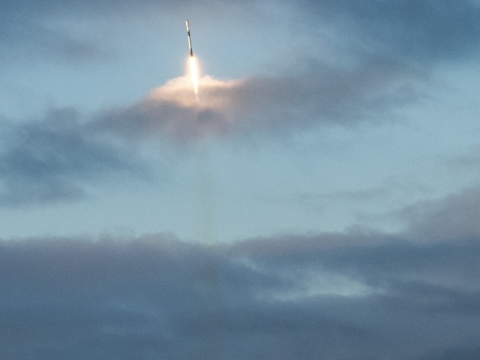Space Information Sharing and Analysis Center Is Open For Business
Now that it has achieved initial operating capability, the Colorado Springs-based Space Information Sharing and Analysis Center (ISAC) aims to be an all-threats space security information source for the public and private space sector. Over the last few years while it was standing up, the center built partnerships with 30 governmental agencies across the world and added 64 member organizations, from which it will leverage space-related data for its Operational Watch Center.
“This extensive collaboration allows us to collect and analyze vast amounts of data, making the watch center the most comprehensive single point source for information on space security and threats to space assets,” said Space ISAC Executive Director Erin Miller in a call with several Space ISAC members and the media. The center also released informational documents about its creation.
The founding members of Space ISAC include: Aerospace Corporation, Booz Allen Hamilton; Deloitte; Johns Hopkins University Applied Physics Laboratory; Kratos; L3 Harris; Lockheed Martin; Microsoft; MITRE; North Grumman; Parsons; Purdue University; SES; University of Colorado, Colorado Springs; Utah State University Space Dynamics Laboratory.
The watch center will consist of about 10 analysts—with other experts providing additional support on a virtual basis. The goal is to operate 24/7, with beginning operations of up to 10 hours a day, five days a week, according to the Space ISAC. The analysts will monitor incoming space-related sensor data from feeds, detect threats, create incident reports and confirm findings with other stakeholders and sources.
Cyber-related threat information will also be a key component of the center’s data-gathering, according to Sreenidhi Tummala, Lockheed Martin Space’s software engineering director of Development Security Operations. “The ability to share information within industry, really to have a better understanding of the cyber threat environment at all times, is extremely important. The Space ISAC facilitates this information exchange helping to ensure the industry has a united front against cyber threats to our nation and its space assets.”
As part of operations, the analysts at the Space ISAC, in part, will use Microsoft-based tools, including an Azure-hosted cloud architecture that will provide a picture into the data about space-related threats.
“[This will] enable analysts from our founding and platinum members to remotely access the watch center from around the world,” Miller stated. “This collaborative environment offers visualization of threat information, allowing us to rapidly detect, assess and respond to vulnerabilities, incidents and threats to commercial space systems.”
“Fundamentally this is a sharing environment,” added William Chappell, vice president of Mission Systems and chief technology officer, Azure Global, Microsoft. “Built on the cloud, we can do signals analysis, primarily, and share what is being done elsewhere and then pass that across the community. That's true for things like RF [radio frequency] jamming and the signal environments. It's not just a cyber-only sharing environment.”

This extensive collaboration allows us to collect and analyze vast amounts of data, making the watch center the most comprehensive single point source for information on space security and threats to space assets.
The organization is housed within the National Cybersecurity Center (NCC), led by Lt. Gen. Harry Raduege, USAF (Ret.). The NCC operates the Space ISAC as well as the Colorado Cyber Resource Center, the Cyber Security For Government Leaders program and the Student Alliance for Cyber Education program. Representing the space sector, the SPACE ISAC also is a member of the National Council of ISACs with 25 other sectors.
The idea for the Space ISAC in 2017 came from members of the Science & Technology Partnership Forum, which includes officials from the U.S. Space Force, NASA and the National Reconnaissance Office. “[They] conceived the Space ISAC in response to recognized information-sharing gaps within the cybersecurity and space community,” a center document stated.
“This groundbreaking initiative represents a significant milestone in the global space community's ongoing efforts to enhance the security and resilience of space systems,” Executive Director Miller said.




Comments